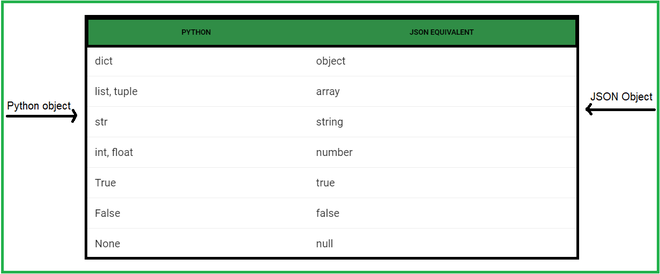在Python中序列化 JSON 数据
序列化是将原始数据类型编码为 JSON 格式的过程。 Python模块json将Python字典对象转化为JSON对象,list和tuple转化为JSON数组,int和float转化为JSON数字,None转化为JSON null。

让我们来看看我们如何使用这些方法将Python数据序列化为 JSON 格式:
- 倾倒()。
- 转储()。
转储()
json.dump()方法可用于写入 JSON 文件。以 json 格式将数据写入类文件对象。
Syntax: json.dump(dict, file_pointer)
Parameters:
- dictionary – name of dictionary which should be converted to JSON object.
- file pointer – pointer of the file opened in write or append mode.
下面是实现:
转换Python对象并写入json文件。
Python3
# import module
import json
# Data to be written
data = {
"user": {
"name": "satyam kumar",
"age": 21,
"Place": "Patna",
"Blood group": "O+"
}
}
# Serializing json and
# Writing json file
with open( "datafile.json" , "w" ) as write:
json.dump( data , write )Python3
# import module
import json
# Data to be written
data = {
"user": {
"name": "satyam kumar",
"age": 21,
"Place": "Patna",
"Blood group": "O+"
}
}
# Serializing json
res = json.dumps( data )
print( res )输出:

数据文件.json
json.dumps()
json.dumps()方法可以将Python对象转换为 JSON字符串。
Syntax: json.dumps(dict)
Parameters:
- dictionary – name of dictionary which should be converted to JSON object.
下面是实现:
将Python对象转换为 json 字符串。
蟒蛇3
# import module
import json
# Data to be written
data = {
"user": {
"name": "satyam kumar",
"age": 21,
"Place": "Patna",
"Blood group": "O+"
}
}
# Serializing json
res = json.dumps( data )
print( res )
输出:
